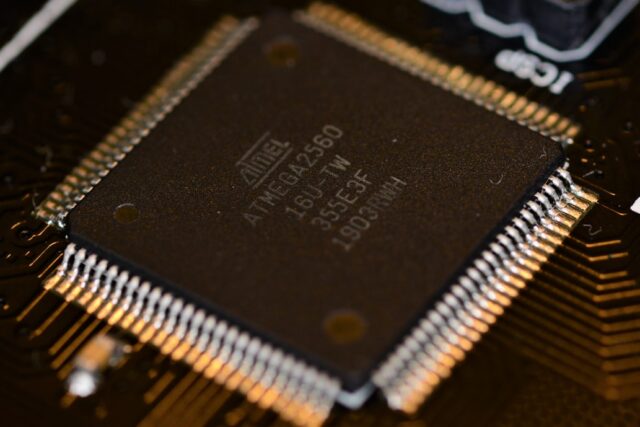The mobile AI revolution represents a transformative shift in how we interact with technology on a daily basis. As smartphones and tablets have become ubiquitous, the integration of artificial intelligence into these devices has fundamentally altered user experiences, enabling a level of personalization and efficiency previously thought unattainable. This revolution is not merely about enhancing existing functionalities; it is about redefining the very nature of mobile computing.
With AI capabilities embedded directly into mobile devices, users can now enjoy smarter applications that learn from their behaviors, anticipate their needs, and provide tailored solutions in real-time. The rise of mobile AI is driven by several factors, including advancements in machine learning algorithms, increased processing power, and the proliferation of data generated by users. As mobile devices become more powerful, they can handle complex computations that were once reserved for desktop computers or cloud-based systems.
This shift allows for a more seamless integration of AI into everyday tasks, from voice recognition and natural language processing to image analysis and predictive analytics. The implications of this revolution extend beyond mere convenience; they touch on privacy, security, and the ethical considerations of deploying AI technologies in personal devices.
The Evolution of AI Chips in Mobile Devices
Specialized Chips for Efficient AI Processing
However, as the need for more sophisticated AI applications grew, manufacturers began developing specialized chips designed to handle machine learning tasks more efficiently. These chips, often referred to as neural processing units (NPUs) or AI accelerators, are engineered to perform complex calculations at high speeds while consuming minimal power.
Notable Examples of AI Chip Evolution
One notable example of this evolution is Apple’s A-series chips, which have integrated dedicated neural engines since the A11 Bionic chip was introduced in 2017. This innovation allowed Apple devices to perform tasks such as facial recognition and augmented reality with remarkable speed and accuracy. Similarly, Qualcomm’s Snapdragon processors have incorporated AI capabilities through their Hexagon DSPs, enabling features like real-time language translation and enhanced photography.
A New Era of Mobile AI Capabilities
The competition among chip manufacturers has spurred rapid advancements, leading to a new era where mobile devices can process vast amounts of data locally, reducing reliance on cloud computing and enhancing user privacy.
The Impact of AI Chips on Mobile Devices

The impact of AI chips on mobile devices is profound and multifaceted. By enabling on-device processing, these chips significantly enhance performance while reducing latency. For instance, applications that rely on voice recognition can operate more smoothly when the processing occurs directly on the device rather than being sent to a remote server for analysis.
This not only speeds up response times but also improves user experience by allowing for continuous interaction without interruptions. Moreover, the integration of AI chips has led to significant improvements in battery efficiency. Traditional processors often consume substantial power when performing complex tasks, but specialized AI chips are designed to execute these tasks with minimal energy expenditure.
This efficiency is particularly crucial for mobile devices, where battery life is a primary concern for users. As a result, users can enjoy advanced features such as real-time image processing for photography or intelligent personal assistants without the constant need to recharge their devices.
Advancements in Mobile AI Applications
| Metrics | Data |
|---|---|
| Number of Mobile AI Applications | Over 5 million |
| Mobile AI Market Size | Projected to reach 17.83 billion by 2025 |
| Mobile AI User Engagement | Over 2 hours per day on average |
| Mobile AI Accuracy | Exceeds 90% in various applications |
The advancements in mobile AI applications have been nothing short of revolutionary, transforming how users engage with their devices and the world around them. One prominent area of development is in photography and image processing. Modern smartphones equipped with AI capabilities can analyze scenes in real-time, adjusting settings automatically to optimize image quality.
For example, Google’s Pixel phones utilize machine learning algorithms to enhance low-light photography, allowing users to capture stunning images even in challenging lighting conditions. Another significant advancement is in the realm of personal assistants. Virtual assistants like Apple’s Siri, Google Assistant, and Amazon’s Alexa have evolved from simple voice recognition tools into sophisticated systems capable of understanding context and providing personalized responses.
These assistants can learn user preferences over time, making them more effective at managing tasks such as scheduling appointments, sending messages, or controlling smart home devices. The ability to process natural language with greater accuracy has made these applications indispensable for many users.
The Future of Mobile AI: Potential Developments and Innovations
Looking ahead, the future of mobile AI holds immense potential for further developments and innovations that could reshape our interactions with technology. One area ripe for exploration is the integration of augmented reality (AR) with AI capabilities. As mobile devices become increasingly powerful, we can expect to see more applications that blend the physical and digital worlds seamlessly.
For instance, AR applications could leverage AI to provide real-time translations of text or even overlay contextual information about objects in the user’s environment. Additionally, advancements in edge computing will likely play a crucial role in the future of mobile AI. By processing data closer to where it is generated—on the device itself—edge computing can enhance privacy and security while reducing latency.
This shift could enable more sophisticated applications in areas such as healthcare, where real-time monitoring and analysis of patient data could lead to improved outcomes. As mobile devices continue to evolve, we may witness the emergence of entirely new categories of applications that harness the power of AI in ways we have yet to imagine.
Challenges and Concerns Surrounding Mobile AI Chips

Despite the numerous benefits associated with mobile AI chips, several challenges and concerns must be addressed as this technology continues to evolve. One significant issue is privacy. With mobile devices collecting vast amounts of personal data to improve AI functionalities, there is an inherent risk that sensitive information could be misused or inadequately protected.
Users may be unaware of how their data is being utilized or shared with third parties, raising ethical questions about consent and transparency. Another challenge lies in the potential for bias within AI algorithms. Machine learning models are trained on datasets that may reflect societal biases or inaccuracies, leading to skewed outcomes in applications such as facial recognition or predictive analytics.
If not carefully managed, these biases can perpetuate discrimination or reinforce stereotypes, undermining the very benefits that mobile AI aims to provide. Addressing these concerns requires a concerted effort from developers, policymakers, and users alike to ensure that mobile AI technologies are deployed responsibly and equitably.
The Role of Mobile AI in Everyday Life
Mobile AI has become an integral part of everyday life for millions of people around the globe. From navigation apps that provide real-time traffic updates to fitness trackers that analyze user activity patterns, the influence of AI is pervasive across various domains. For instance, smart home devices equipped with AI capabilities can learn user habits and preferences over time, optimizing energy usage and enhancing comfort levels within living spaces.
In addition to practical applications, mobile AI also plays a significant role in entertainment and social interaction. Streaming services utilize machine learning algorithms to analyze viewing habits and recommend content tailored to individual tastes. Social media platforms employ AI-driven algorithms to curate news feeds and suggest connections based on user behavior.
These applications not only enhance user engagement but also foster a sense of community by connecting individuals with shared interests.
The Implications of the Mobile AI Revolution
The implications of the mobile AI revolution are profound and far-reaching, influencing not only how we interact with our devices but also how we navigate our daily lives. As mobile technology continues to advance at an unprecedented pace, the integration of AI will likely become even more seamless and intuitive. However, this evolution comes with responsibilities; stakeholders must prioritize ethical considerations and user privacy while fostering innovation.
As we stand on the brink of this new era in technology, it is essential to recognize both the opportunities and challenges presented by mobile AI. By embracing these advancements thoughtfully and responsibly, we can harness the full potential of mobile AI to enhance our lives while ensuring that technology serves as a force for good in society. The journey ahead promises exciting developments that will shape our future interactions with technology in ways we are only beginning to understand.
FAQs
What are mobile AI chips?
Mobile AI chips are specialized processors designed to handle artificial intelligence tasks on mobile devices such as smartphones, tablets, and wearables. These chips are optimized for machine learning and deep learning algorithms, enabling faster and more efficient AI processing on mobile devices.
How do mobile AI chips work?
Mobile AI chips work by using specialized hardware and software to accelerate AI tasks such as image recognition, natural language processing, and voice recognition. These chips often feature dedicated neural processing units (NPUs) or tensor processing units (TPUs) to efficiently execute AI algorithms.
Why are mobile AI chips a game-changer?
Mobile AI chips are a game-changer because they bring advanced AI capabilities directly to mobile devices, enabling on-device AI processing without relying on cloud servers. This allows for faster and more privacy-conscious AI applications on mobile devices, opening up new possibilities for mobile AI-powered experiences.
What are the benefits of mobile AI chips?
The benefits of mobile AI chips include improved performance and efficiency for AI tasks on mobile devices, reduced reliance on cloud servers for AI processing, enhanced privacy and security for AI applications, and the ability to run more advanced AI-powered features directly on mobile devices.
How will mobile AI chips impact the future?
Mobile AI chips are expected to have a significant impact on the future by enabling a new wave of AI-powered mobile experiences, including advanced augmented reality applications, personalized virtual assistants, real-time language translation, and more. These chips are also likely to drive innovation in areas such as healthcare, automotive, and robotics.



MOST COMMENTED
Apps
10 Hidden Android Apps: Boost Productivity Instantly
Apps
Privacy-Focused Messaging Apps: A 2025 Comparison
Apps
Top Minimalist Apps for a Distraction-Free Life
Apps
Top Offline Apps for 2025: No Internet Needed
Gadget
The Battle of Wearables: Smart Rings vs. Smartwatches
Gadget
The Future of Mental Health: Wearable Gadgets on the Rise
Laptops
Top Laptops for Coding and Content Creation Under ₹70,000